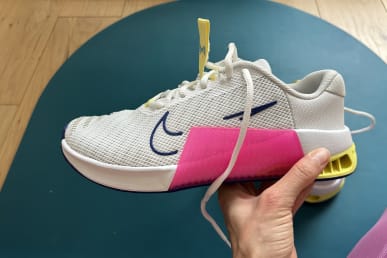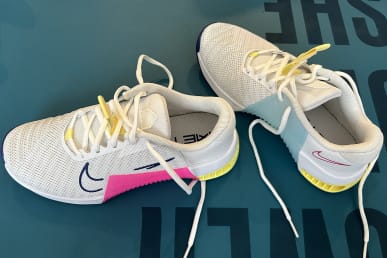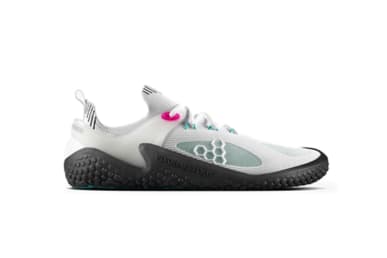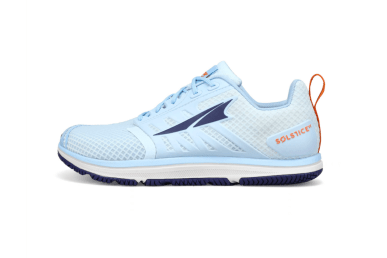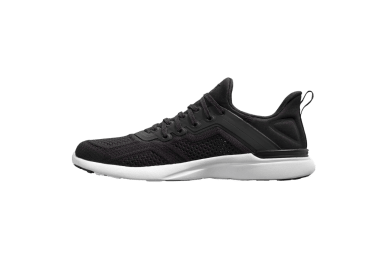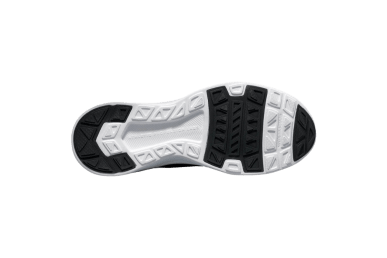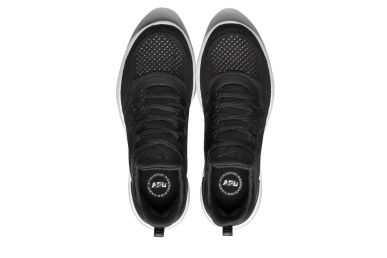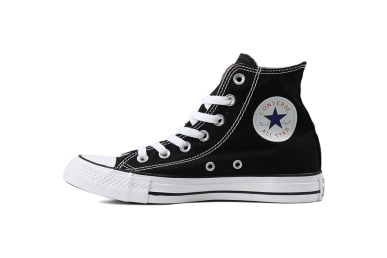Advertisement
I Tested The Best Weightlifting Shoes & Instantly Felt Stronger — My Top Picks


If you want to reap the many benefits of weightlifting (e.g. increased energy levels1, hormonal balance2, and a longer life), the right footwear is essential. I learned the hard way that running shoes won't cut it.
The best weightlifting shoes are designed to offer support while promoting balance and proper form to prevent injury. As soon as I swapped out my running shoes for properly designed weightlifting shoes, my form improved and I was able to lift heavier. Best of all, I saw faster results
I then became obsessed with finding and testing the absolute best weightlifting shoes on the market, so I consulted a podiatrist and holistic chiropractor for their expert insights. Now, I'm crushing my strength training workouts with confidence—and you can too.
Find my top picks below based on testing, expert advice, and extensive research.
- Best overall: Nike Metcon 9
- Best for stability: NoBull Lifters
- Best for cross training: APL TechLoom Tracer
- Best barefoot design: Vivobarefoot Motus Strength
- Best zero-drop: Altra Solstice XT 2
- Best budget: Converse Chuck Taylors
How we selected the best weightlifting shoes
How we selected the best weightlifting shoes
- Expert criteria: We sought advice from a podiatrist and fitness trainer to ensure our picks meet the demands for the range of weightlifting routines and foot types.
- Testing: After a lot of research I tested my very top picks from brands like Reebok, NoBull, Nike, and Vivobarefoot. I wore each sneaker for the same weightlifting workouts and evaluated how they performed.
- Stability: Experts say stability is key, so we picked weightlifting shoes that will give you the most stable base to push off from while providing support from ankles to arches.
- Comfort: When testing the best weightlifting shoes, I quickly learned that some can be quite stiff. I kept comfort top of mind when selecting our final picks.
- Quality: As always, I prioritized shoes made from the highest quality, most durable materials—so you can get the most amount of time and workouts out of your purchase.
- Reviews & ratings: While I always consider all foot types when testing and evaluating, I cant fully put myself in the body of someone with very different feet than my own. I read hundreds of reviews to get a very broad perspective.
Pros & Cons
Pros & Cons
Pros
Lightweight, breathable material
Perfect balance of flexibility and stability
Very versatile
Cons
Some people say the toe box is narrow
The Nike Metcon 9 sneakers are easily the most comfortable weightlifting shoes I've ever worn—and they're also the most versatile. A lightly cushioned foam base protects your joints during high impact moves, while a flat, wide heel creates a stable base for pushing off from the ground.
Many other weightlifting shoes I tested felt too heavy or stiff on my feet, but these strike the perfect balance between flexible and stable. The brand’s Hyperlift plate helps me feel grounded and supported, even when I’m lifting heavy.
I feel sturdy in my stance and in every movement, yet I'm still able to perform movements such as jump squats and burpees comfortably. The shoes feel lightweight and breathable on my feet, and I love the simple and discreet lace lock system.
Sustainability perk: These shoes are made with at least 20% recycled content by weight. While I wish it were more, this feels like a step in the right direction for the brand.
Editor's tip:
Pros & Cons
Pros & Cons
Pros
Extremely durable and well made
Great stability
Feels very secure on your feet
Cons
Not vegan
Very stiff
The NOBULL Lifters were my first foray into the weightlifting shoe world. Each shoe is handmade and features top-grade leather that’s meant to last for years to come. Case in point: I've had mine for two years and they still look brand new.
Rather than thick, bouncy cushioning, these shoes opt for a wide, flat, very sturdy outsole. This ensures a stable surface for your feet during dynamic movements, which minimizes your risk of injury.
I like that my foot doesn’t slide around in these, and that they’re supportive for forward or lateral movements. They have a slightly elevated heel, which increases your ankle’s range of motion for an even deeper squat—yes, I can actually feel the difference in my glutes.
They’re definitely on the stiff side compared to others I’ve tested, so I would recommend them for weightlifting only (not for any cross training).
Editor's tip:
Pros & Cons
Pros & Cons
Pros
Science-backed design
Very lightweight and breathable
Sustainable materials
Cons
Not great for running
The Motus Strength sneakers are my absolute favorite barefoot weightlifting shoe. I love that this science-backed design allows my feet to move the way they were meant to move, which helps my entire body step into its full potential.
They have more grip than most traditional sneakers I’ve worn. The sole is 2 millimeters thick with a 1.5-millimeter indented grid pattern that helps the shoe get a stable grip on the ground beneath your feet.
The Motus Strength are flexible, breathable, and comfortable, and they look great on. I feel significantly stronger and way less wobbly when I wear these shoes, and I’ve notices my balance, form, and strength have all improved.
If you've been curious about barefoot shoes, or you simply want to feel more stable and secure in your workouts, I'd strongly recommend giving these a try.
Pros & Cons
Pros & Cons
Pros
Chiropractor-recommended
Sleek and stylish design
Feels very lightweight on your feet
Cons
Some reviewers say they're not the most durable
Sponaugle personally recommended the Altra Solstice as her favorite weightlifting shoes for women. They're designed specifically for the unique shape of the female foot, with a roomy toe box and firm cage that gives extra support during lateral movements.
The shoe itself is lightweight and flexible and moves well with your foot. The brand’s Balanced Cushioning™ platform helps position the heel and forefoot at an equal distance from the ground, which is meant to help support proper alignment and form during workouts, walking, and everyday use.
I love that this is a zero-drop shoe (meaning it’s flat between the toes and heels), which research shows can increase foot strength3, boost athletic performance and reduce risk of injury.
While most testers rave about this shoe's versatility and performance, a few note that the material doesn't hold up as well as other Alta shoes.
Pros & Cons
Pros & Cons
Pros
Stylish design with plenty of colors
Versatile enough for cross training
Very comfortable, breathable material
Cons
Very short return window
Not as stable or secure as other weightlifting shoes
The APL TechLoom Tracer is great for generalists who are adding HIIT exercises to their weight lifting sessions. The shoe has a locked-in lacing system and high-quality, low-profile cushioning to help you perform at your best with no interruptions. There are also rubber grip pads placed in key high-wear areas, for extra stability and traction.
As flexible as the shoe is, the material is actually quite sturdy and keeps your foot secure and stable whether you’re walking or working out.
There are a lot of reasons APL became a cult-favorite shoe. I love how versatile the Tracers are; you can wear them to the gym for weightlifting or cross training—and you don't need to change out of them when you leave, either.
Many reviewers note that they have multiple pairs (there are so many color options!) and the overwhelming consensus is that these shoes are incredibly comfortable and breathable.
Just note, these shoes run on the small side. I'd recommend going up one half size.
Pros & Cons
Pros & Cons
Pros
Versatile enough for streetwear or the gym
Available in wide sizes
Basic, straightforward design
Cons
Some say they run large
If you want a no-frills shoe you can wear from the gym to the street, you can't go wrong with the Converse Chuck Taylors. This classic timeless shoe has a high top design for added ankle support, a flat sole for even weight distribution and balance, and endless colors to choose from.
I love the straightforward design, and I certainly can't complain about the fact that these shoes are only $65. Plus, I love that they're the OG zero-drop weightlifting shoe.
You won't get quite as much structure as from a higher quality weightlifting shoe, but the lightly padded footbed feels soft-yet-stable under you feet. I like that there isn't too much cushioning or bounce, which helps you stay secure during each movement.
Many reviewers swear by the Chuck Taylors for rigorous gym days, with rave reviews that they're comfortable right out of the box. But be warned: These run quite large. I'd recommend going down at least one full size.
Comparing the best weightlifting shoes
| Product | Price | Sizes available | Colorways | Drop | Weight |
|---|---|---|---|---|---|
| Nike Metcon 8 | $150 | 5-16; half sizes available | 10 | 4mm | 10.72 oz. |
| NoBull Lifters | $125 | 5-11; half sizes available | 2 | 18.5mm | 17.6 oz. |
| APL TechLoom Tracer | $250 | 5-11; half sizes available | 20 | 8mm | 7.1 oz. |
| Vivobarefoot Motus Strength | $145 | 4.5-11; some half sizes available | 6 | 0mm | 10.6 oz. |
| Altra Solstice XT 2 | $130 | 5.5-12; half sizes available | 3 | 0mm | 8.3 oz. |
| Converse Chuck Taylors | $65 | 5-18; half sizes available | 14 | 0mm | 14 oz. |
New to weightlifting?
How to choose the best weightlifting shoes
The main goals of weightlifting shoes are to promote healthy technique and reduce the risk of injury. They typically feature either a flat sole that allows you to root down for balance, or a wedge-shaped sole that supports proper form and better range of motion.
All weightlifting shoes should be sturdy, offer ankle support, and have high traction that prevents shifting as you train. Add it all up and you have something quite different from a long-distance running shoe, which podiatrist Robert Kornfeld highly advises against wearing while lifting.
"Long-distance running shoes are ultra-lightweight, well cushioned, and flexible, so they may not provide the needed support in more stationary types of activity where there is a lot more stance phase stress," Kornfeld explains.
Sarah Sponaugle, a holistic chiropractor, adds that weightlifting shoes with a low profile and a wide toe box help activate your toes and the muscles in your feet to provide a solid foundation.
"The best feature for a weightlifting shoe is one that doesn't hinder support while still allowing for movement in all directions," she says. "Look for something on the flatter side so all four quadrants of the foot have good contact with the ground."
Lastly, you'll want to consider the intended use case. Some shoes on our list are designed solely for weightlifting, while others are a great option for cross training (i.e. weight training, HIIT, and some light running).
Summary
FAQ:
Can you deadlift in weightlifting shoes?
Sponaugle confirms that you can deadlift in a weight training shoe. "This is actually the preferred shoe when including deadlifts into your workout routine," she said.
Can you run in weightlifting shoes?
According to Sponaugle, you should use a running shoe when running any distance over 1 mile. A running shoe is designed to support the foot in a more forward motion versus a weightlifting shoe, which has support for both forward and lateral motions. Additionally, running shoes have cushioned bottoms versus weightlifting shoes, which have very little cushion so the individual may have more awareness of the ground beneath their feet.
Where do you buy weightlifting shoes?
Sponaugle says you can find great weightlifting shoe brands both online and in sporting goods and retail stores.
The takeaway
Since adding more strength training to my routine, I've seen a huge impact on my energy levels, mood, and physique—and my results improved tenfold when I invested in a good pair of weightlifting shoes. My top picks are the Nike Metcon 9 and the Vivobarefoot Motus Strength, but you can't go wrong with any option on our list.
Crossing off all your shoe needs? Check out our round ups of the best running shoes for beginners and the best walking shoes for women.
Additional reporting by Kelsea Samson.


